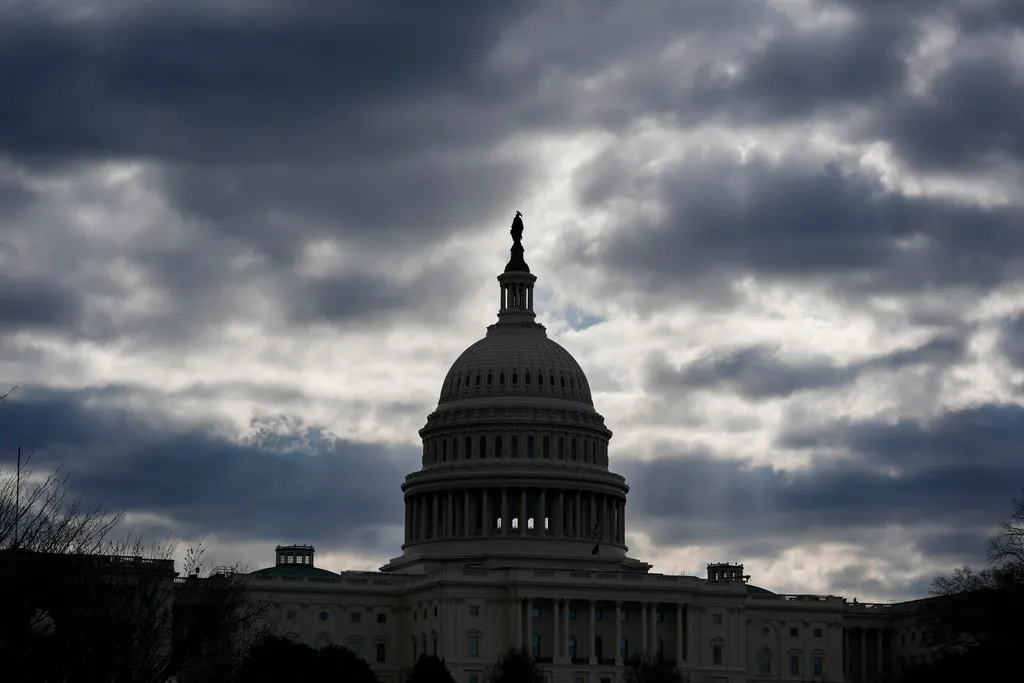As the U.S. government shutdown drags on for over a month, lawmakers on Capitol Hill are beginning to take tentative steps toward resolution. Senate Republicans are collaborating with some Democrats to amend a spending bill that was previously passed by the House, aiming to fund the government through late January. However, significant hurdles still exist, particularly regarding the inclusion of healthcare provisions and the need for bipartisan support.
| Article Subheadings |
|---|
| 1) An Overview of the Shutdown Situation |
| 2) The Legislative Process Ahead |
| 3) The Role of Senate Democrats |
| 4) Risk Factors Associated with the Shutdown |
| 5) Future Implications |
An Overview of the Shutdown Situation
The U.S. government has been in a state of shutdown for over 35 days, leading to extensive disruptions across various federal services. The shutdown has triggered widespread concerns among both lawmakers and the public about the implications of prolonged inactivity. Key government operations, including social services, public safety, and economic functions, are significantly affected. Efforts to secure a bipartisan agreement have been challenging, leading to an atmosphere of uncertainty. With negotiations underway, officials are looking for feasible pathways to restore government funding and resume normal operations.
The Legislative Process Ahead
In recent days, Senate Republicans have initiated discussions with certain Democrats to amend a House-passed spending bill. This proposed amendment would extend government funding through late January without addressing health care provisions or other contentious issues. To advance this measure, Senate Republicans need to secure at least five votes from Democratic caucus members to overcome a filibuster, which would require a total of 60 votes. These negotiations might unfold as soon as Thursday or later this week, making it a critical time for lawmakers to find common ground.
The Role of Senate Democrats
Senate Democrats hold a pivotal role in determining the future of the proposed spending bill. There is speculation about the potential strategies that could prompt some Democrats to vote in favor of the bill, such as offering a specific timeline for addressing healthcare subsidies or a commitment regarding unfinished spending bills. However, the dynamics within the Democratic caucus are complex, as the leadership has made it clear that any agreement may need to adhere to their policy priorities. Some Senate Democrats may find themselves in conflict with House liberals, potentially creating further complications in the legislative process.
Risk Factors Associated with the Shutdown
The consequences of the government shutdown extend beyond political maneuvering; they pose significant risks to essential services and economic stability. Programs such as the Supplemental Nutrition Assistance Program (SNAP) face potential disruptions, affecting food security for millions of Americans. Additionally, aviation safety is a growing concern, with potential implications for public safety and commerce. The longer the shutdown persists, the more it could hinder economic growth and elevate public discontent, putting pressure on lawmakers to resolve the situation swiftly.
Future Implications
As discussions continue in Washington, the future of the government shutdown remains uncertain. Lawmakers face mounting pressure from constituents and interest groups alike, all advocating for a resolution. Should a deal not be reached soon, the repercussions could range from increased economic instability to long-lasting political fallout. The ramifications of the shutdown could also influence upcoming legislative elections as voters hold representatives accountable for their roles in the prolonged impasse. The coming days will be critical in determining whether the government can return to normal operations or if more severe measures will be needed to navigate the crisis.
| No. | Key Points |
|---|---|
| 1 | The U.S. government shutdown has lasted over 35 days, disrupting essential services. |
| 2 | Negotiations between Senate Republicans and some Democrats have begun, focusing on a spending bill. |
| 3 | Senate Democrats will play a crucial role in determining the outcome of the proposed spending bill. |
| 4 | The shutdown carries significant risks, including threats to SNAP benefits and aviation safety. |
| 5 | Future implications of the shutdown include potential economic instability and political fallout. |
Summary
The ongoing government shutdown highlights the challenges faced by lawmakers in Washington as they work towards a resolution. Amidst the backdrop of economic concerns and public safety risks, partisan negotiations are critical in determining the future direction of government funding. As discussions evolve, the need for bipartisan cooperation becomes increasingly apparent, emphasizing the importance of addressing both immediate and long-term implications of this protracted crisis.
Frequently Asked Questions
Question: What is the current status of the government shutdown?
The government has been in a shutdown for over 35 days, with efforts underway to negotiate funding through legislative amendments.
Question: What are lawmakers discussing to resolve the shutdown?
Lawmakers are negotiating amendments to a previously passed spending bill in the House to secure funding through late January without adding healthcare provisions.
Question: What are the potential risks of the ongoing shutdown?
The shutdown poses risks to essential services, including SNAP benefits and aviation safety, along with potential negative impacts on the economy.


